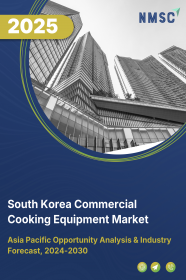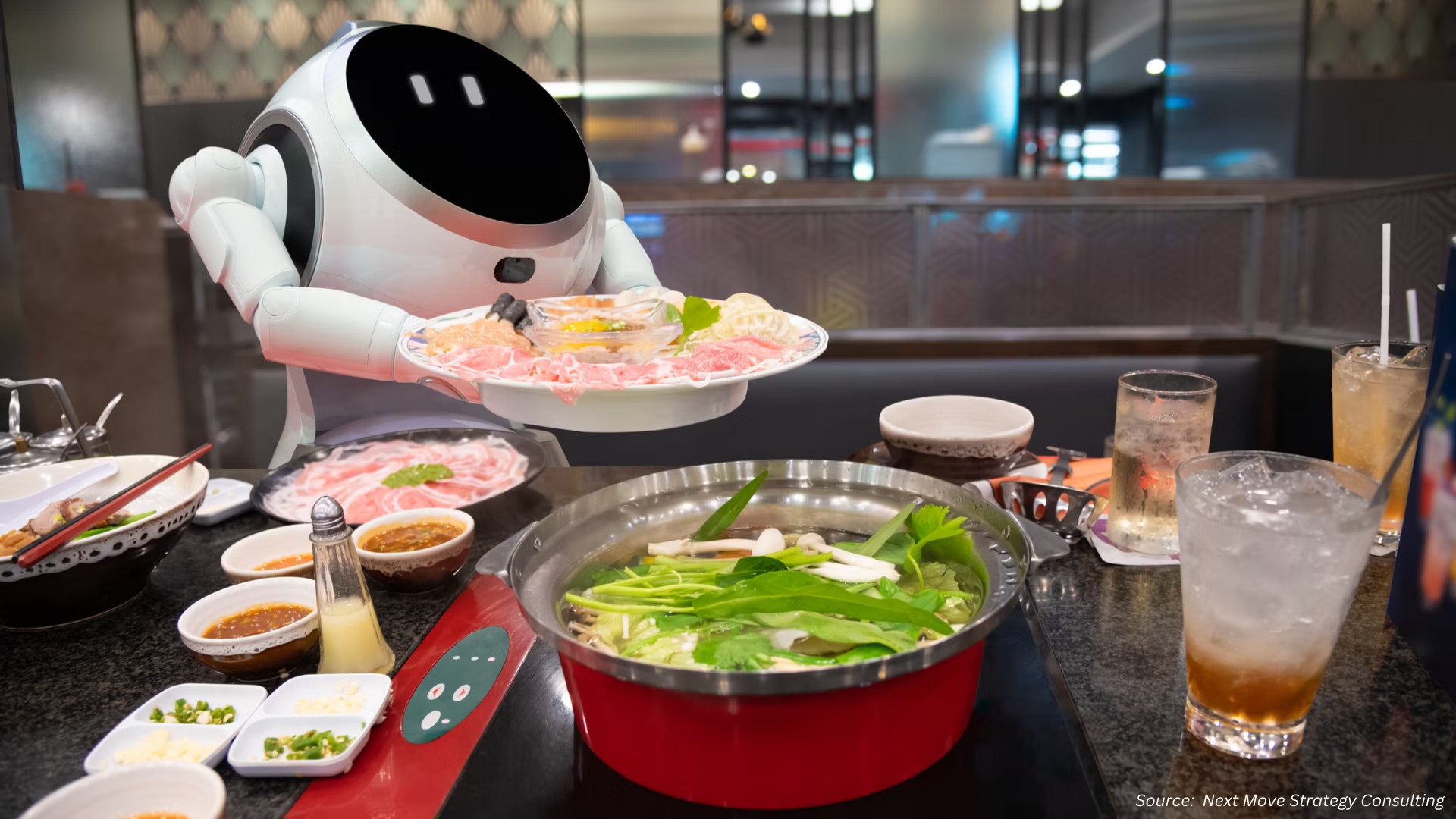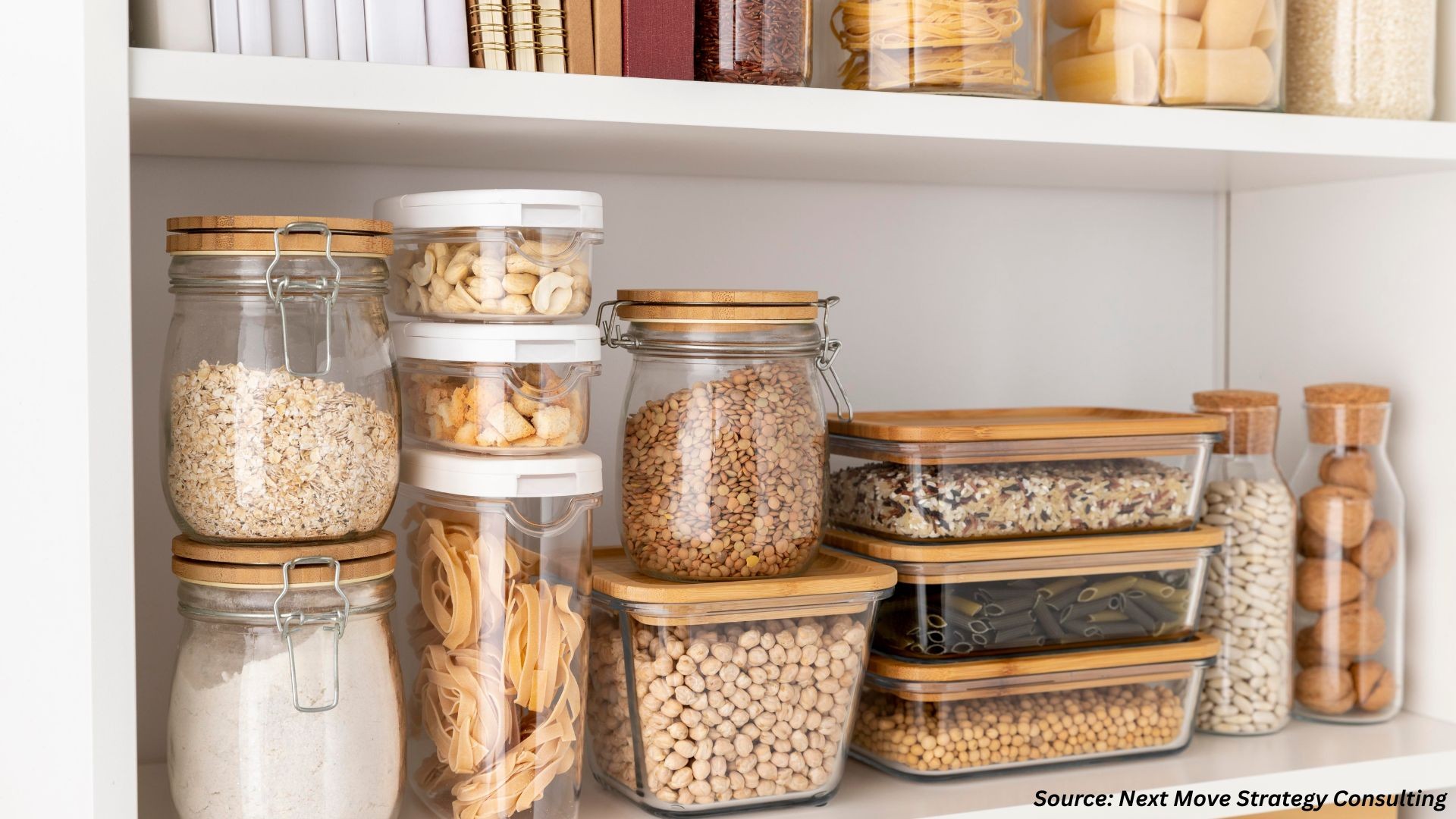
South Korea Commercial Cooking Equipment Market by Type (Ovens, Ranges and Cooktops, Grills and Broilers, Fryers, Braising Pans and Tilting Skillets, Kettles, Braising Pans and Tilting Skillets, Steamers and Boilers, Cook-chill Systems, Kettles, Mixers, Grinder, Slicer, and Others), and by End-User (Full-Service Restaurants, Quick Service Restaurants, Catering Services, Railway Dining, Resorts & Hotel, Hospitals and Other End Users)- Country Opportunity Analysis and Industry Forecast, 2024– 2030
Industry: Retail and Consumer | Publish Date: 27-Jun-2025 | No of Pages: 165 | No. of Tables: 128 | No. of Figures: 73 | Format: PDF | Report Code : RC2952
South Korea Commercial Cooking Equipment Market Overview
The South Korea Commercial Cooking Equipment Market size was valued at USD 386.2 million in 2023, and is predicted to reach USD 609.7 million by 2030, at a CAGR of 6.3% from 2024 to 2030. In terms of volume, the market size was 57 thousand units in 2023, and is projected to reach 112 thousand units by 2030, with a CAGR of 9.5% from 2024 to 2030.
Commercial cooking equipment encompasses a variety of appliances and tools crafted for professional kitchens in restaurants, hotels, and catering businesses. Designed for efficiency and safety, this equipment is built with durable materials to endure continuous use, reducing downtime and ensuring a seamless kitchen workflow. Modern designs emphasize energy efficiency, helping businesses lower utility costs and environmental impact. Investing in top-tier hospitality cooking equipment is essential for maintaining smooth operations, enhancing competitiveness, and boosting profitability in the food service industry.
Surging Tourism And Domestic Travel In South Korea Drives Equipment Demand
South Korea has witnessed a robust rebound in inbound tourism post-pandemic, coupled with sustained growth in domestic travel and dining. The Korean government's initiatives to boost tourism—such as visa relaxations, cultural events, and investment in hospitality infrastructure—have led to increased foot traffic in hotels, resorts, and traditional guesthouses. This expansion of the hospitality ecosystem directly fuels demand for commercial cooking equipment, as food service providers seek to enhance operational efficiency and maintain high standards of service for both domestic and international visitors. According to the Korea Tourism Organization (KTO), foreign tourist arrivals in 2023 increased by over 350% compared to the previous year, with further growth expected. This sustained rise in tourism elevates the demand for reliable, high-capacity cooking solutions tailored to Korean and international cuisines.
Expanding Convenience Food Culture And Franchise Growth
South Korea’s fast-paced urban lifestyle and strong convenience food culture have led to a booming quick-service restaurant (QSR) and café franchise sector. Chains such as Mom’s Touch, Lotteria, and Ediya Coffee are rapidly expanding across metropolitan areas and secondary cities. These establishments require compact, high-speed cooking equipment to serve large volumes of customers efficiently in limited spaces. With consumers increasingly seeking affordable, quick, and hygienic dining options, especially through delivery platforms, QSRs are investing in technologically advanced and energy-efficient kitchen solutions. This ongoing transformation in dining habits continues to drive commercial cooking equipment sales nationwide.
Government Support For F&b And Smart Manufacturing Incentivizes Equipment Uptake
The South Korean government has introduced several initiatives to support the Food & Beverage sector, such as subsidies for SME modernization, digital transformation incentives, and support for sustainable practices. These programs enable restaurants and food processing units to invest in newer, energy-efficient, and smart kitchen equipment. Additionally, the national push for adopting Industry 4.0 and automation in all sectors has led to an uptick in the adoption of IoT-integrated cooking appliances, aligning with Korea’s broader vision of becoming a global smart manufacturing hub.
High Cost Of Imported Equipment And Local Manufacturing Limitations
While South Korea is technologically advanced, a large portion of specialized commercial cooking equipment—especially premium or smart solutions—is still imported from Europe, the U.S., or Japan. This reliance on imports leads to higher procurement costs, customs duties, and long lead times. Furthermore, local manufacturers, although growing, often focus on standardized or basic models, creating a gap in availability for advanced or customized solutions. These cost and supply chain challenges pose a significant barrier for smaller food service businesses looking to upgrade or expand their operations.
Growing Demand For Smart, Space-efficient Solutions In Urban Kitchens
With real estate prices soaring in cities like Seoul and Busan, food service businesses are operating in smaller, more compact spaces. This trend is fueling demand for multifunctional, stackable, and modular cooking appliances that maximize utility without compromising performance. Moreover, urban kitchens are increasingly turning to smart cooking equipment with features like remote diagnostics, usage analytics, and automated cleaning to reduce operational overhead. This convergence of space constraints and digital adoption presents a significant growth opportunity for manufacturers offering Korean-market-specific, compact smart cooking solutions.
Competitive Landscape
The key players operating in the South Korea commercial cooking equipment industry include Praim Co.,LTD. Commercial Kitchenware Group Company, Cuckoo Homesys, LocknLock Co., Fagor Professional, Cuchen Co., Ltd, Hobart, Teka Group, Bumil Industrial Co., Ltd., Maxsun Co., Ltd., Daewoo, Locopine, Crechef Co., Ltd., Winia Electronics, Neoco, Daeshin Total Kitchen Equipment Co., Ltd. and others.
South Korea Commercial Cooking Equipment Market Key Segments
By Type
-
Ovens
-
Ranges and Cooktops
-
Grills and Broilers
-
Fryers, Braising Pans and Tilting Skillets, Kettles
-
Braising Pans and Tilting Skillets
-
Steamers and Boilers
-
Cook-chill Systems
-
Kettles
-
Mixers, Grinder, Slicer
-
Others
By End-User Industry
-
Full-Service Restaurants
-
Quick Service Restaurants
-
Catering Services
-
Railway Dining
-
Resorts & Hotel
-
Hospitals
-
Other End Users
Key Players
-
Praim Co.,LTD. Commercial Kitchenware Group Company
-
Cuckoo Homesys
-
LocknLock Co.
-
Fagor Professional
-
Cuchen Co., Ltd
-
Hobart
-
Teka Group
-
Bumil Industrial Co., Ltd.
-
Maxsun Co., Ltd.
-
Daewoo
-
Locopine
-
Crechef Co., Ltd.
-
Winia Electronics
-
Neoco
-
Daeshin Total Kitchen Equipment Co., Ltd.
REPORT SCOPE AND SEGMENTATION:
|
Parameters |
Details |
|
Market Size in 2023 |
USD 386.2 Million |
|
Revenue Forecast in 2030 |
USD 609.7 Million |
|
Growth Rate |
CAGR of 6.3% from 2024 to 2030 |
|
Market Volume in 2023 |
57 thousand Units |
|
Market Forecast in 2030 |
112 thousand Units |
|
Volume Growth Rate |
CAGR of 9.5% from 2024 to 2030 |
|
Analysis Period |
2023–2030 |
|
Base Year Considered |
2023 |
|
Forecast Period |
2024–2030 |
|
Market Size Estimation |
Million (USD) |
|
Market Volume Estimation |
Thousand Units |
|
Growth Factors |
|
|
Companies Profiled |
15 |
|
Market Share |
Available for 10 companies |
|
Customization Scope |
Free customization (equivalent up to 80 working hours of analysts) after purchase. Addition or alteration to country, regional, and segment scope. |
|
Pricing and Purchase Options |
Avail customized purchase options to meet your exact research needs. |




















 Speak to Our Analyst
Speak to Our Analyst

























